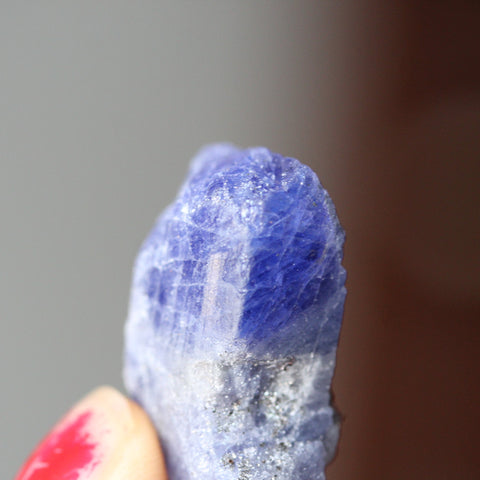Home
Learn Natural Gemstones, Minerals, Crystals Info, News, Tips, Researches
What are 10 ways to identify a Gems and Minerals?

What are 10 ways to identify a Gems and Minerals?
Minerals have different forms and chemical properties that can be tested by simple tests to gauge the quality of minerals. These tests are designed to check their chemical properties and physical forms with the help of laboratory equipment and tools. The minerals are tested for their actual type and accuracy of the exact amount of their different components that make minerals distinct from other types of minerals. These are some of the most commonly used methods to determine the type of mineral with a simple laboratory test. Mostly these tests are simple but in the case of some minerals and gemstones, it can be dangerous.
- Hardness
- Mohs Hardness Scale
- Magnetism
- Color
- Luster
- Streak
- Fluorescence
- Crystal Shape
- Specific Gravity
- Fracture
Hardness
The hardness of a mineral in other words tells us about mineral strength and chemical composition of the mineral. It consists of the following points. First, How do minerals retain their properties against changes in the environment? In what ways environment shape the nature of minerals?

Minerals have different capacity and chemical nature that makes any mineral different from other types of minerals. The hardness of a mineral is determined by different means simply looking at the surface of the mineral and gently scratching the surface with some tools meant that purpose. This common method to check the density of the mineral to see how thick the surface of the mineral is to check its different characteristics.
Mohs Hardness Scale
The hardness of common minerals is determined by the hardness scale known as the Mohs hardness scale. It is a method that is used to check how the mineral is and it can also destroy the mineral if caution is not taken while testing the hardness of the mineral.

The hardness of minerals and the Hardness Scale is a widely used method to test the hardness of minerals and their ability to withstand pressure. The mineral has the potential to tolerate pressure from the environment that is gauged with the help of the Mohs hardness scale in the laboratory.
Magnetism
The magnetic potential of pure iron and magnetite (Fe3O4) is also called magnetism. It also includes meteorites that are rich in iron which makes it magnetic and attracts iron to itself.

Many types of minerals have an iron that makes them half magnetic in nature and repulsion of magnet that can be measured to the strength of the minerals. Minerals are identified based on their magnetic power.
Color
The key indicator of a mineral is its color. Color is the most common indicator of any mineral. The type of minerals is determined by their color and changes. The color can be checked with the eyes in its physical form.

The use of the color of a mineral is not considered a reliable way to test a mineral. The mineral can be observable in different colors it can have colors such as tourmaline, spinels, topaz, etc
Luster
The luster is also used to test and identify minerals. Luster explains how the light is deflected, reflected from the surface of the mineral and light passes through the mineral.

Luster is a glassy, metallic, and glittery surface or silky outer surface of the mineral. It is nonmetallic but looks like metallic to the eye.
Streak
The streak is used in the case of the minerals that are scratching the surface, particularly in soft minerals. Scratching of minerals doesn't change the color on the outer side of the mineral.

Streaks in minerals are usually different from the original color of the minerals and they change with scratches on the surface of the minerals. This is used for the minerals that have a hardness that is less than 7. This streak can also damage the mineral. Adequate caution is taken to perform this test.
Fluorescence
The fluorescence in some of the minerals changes color in different lights.

For example, the mineral is placed in backlight in fluorite, zinc mineral, or Petroleum Quartz it makes it look different by glowing in different colors. Most of the rocks and minerals are not fluorescent. These minerals are from Baluchistan.
Crystal Shapes
Different types of crystal shapes are formed by mineral atoms. The different shapes of crystals formed in the atoms of minerals.


It is used to test minerals. For example, quartz forms different types of crystals.
Learn also type of crystal and crystal structures
Specific Gravity
The specific Gravity is the ratio of mineral mass equal to the volume of water mass. This method is also used to test minerals and classify them as minerals.


Fracture
The fragility and how bristle the structure of crystals in the mineral. For example, the time, when minerals are picked by the miner from mine that are in their broken form.

The type of fracture also helps to identify the types of minerals. The fractures in minerals can be irregular or look like broken glass.
There are many tests used for identifying minerals but above ten most used methods were discussed in detail to test minerals. Mineral exists naturally in different forms that make them different from the other types of components that exist in nature. Minerals are alkaline while tested by evaporated by boiling it. The residue that is left on china clay pots is checked for taste. it was salty. Some minerals when reacting with acid create bubbles as a reaction. The crystals formed by boiling minerals change the nature of the mineral by forming different properties.




